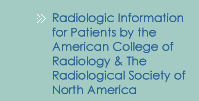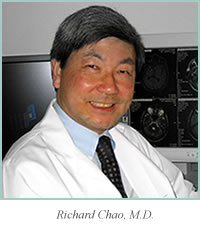Health News - Around Alhambra - Alhambra Chamber of Commerce MRI plays important role in detection of sports injuries Kobe Bryant hurts his shooting hand. Yao Ming hurts his foot and may be out for the Summer Beijing Olympics. The coaches can't tell whether they can play until after their MRI exams. So, what is MRI? MRI (magnetic resonance imaging) is one of several important diagnostic tests used by physicians to evaluate the health of the human body. MRI uses radio waves and strong magnetic fields to generate superb, 3-dimensional pictures of the body. High Definition MRI can show the muscles, tendons, ligaments, and bones in exquisite detail, much better than plain x-rays or CT scans. Particularly, MRI can show the internal swelling and irregularities in these structures when injured. Therefore, it is great for evaluating minor and major sports injuries such as Kobe Bryant?s pinkie finger ligament tear or Yao Ming?s stress fracture of the foot. High Definition MRI plays an important role in guiding your doctor in deciding what to do about your injury but the best is not to get injured in the first place. You get peak performance with fewer injuries by warming up and stretching prior to any strenuous exercise or game. A serious knee injury often seen in basketball and soccer is the tear of the ACL (anterior cruciate ligament). The ACL is a thick band of tissue connecting the thighbone to the shinbone which stabilizes the knee during bending, jumping and pivoting. It can tear during a jump and uncontrolled landing, twisting or sudden stop. Depending on the severity of the ACL tear as seen on MRI, treatment can be surgical or nonsurgical, but will require weeks to months of physical therapy and rehabilitation. To reduce the risk of an ACL injury, slightly bend the knees and hips when landing, rather than standing straight up with knees locked. Also try landing on the forefoot instead of the heel. Richard Chao, M.D. is a board certified radiologist with 25 years experience, specializing in MRI and molecular imaging. He is the medical director of Pacific Medical Imaging and Oncology Center, located at 707 S. Garfield Ave., Suite B-001, Alhambra. Call (626) 227-2727 or visit www.PMIOC.com for more information.
|



